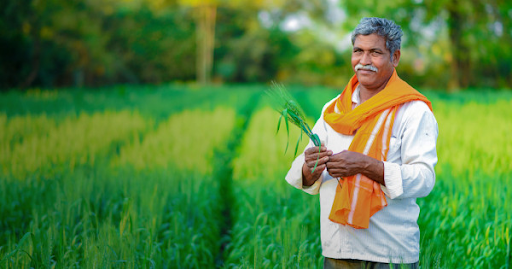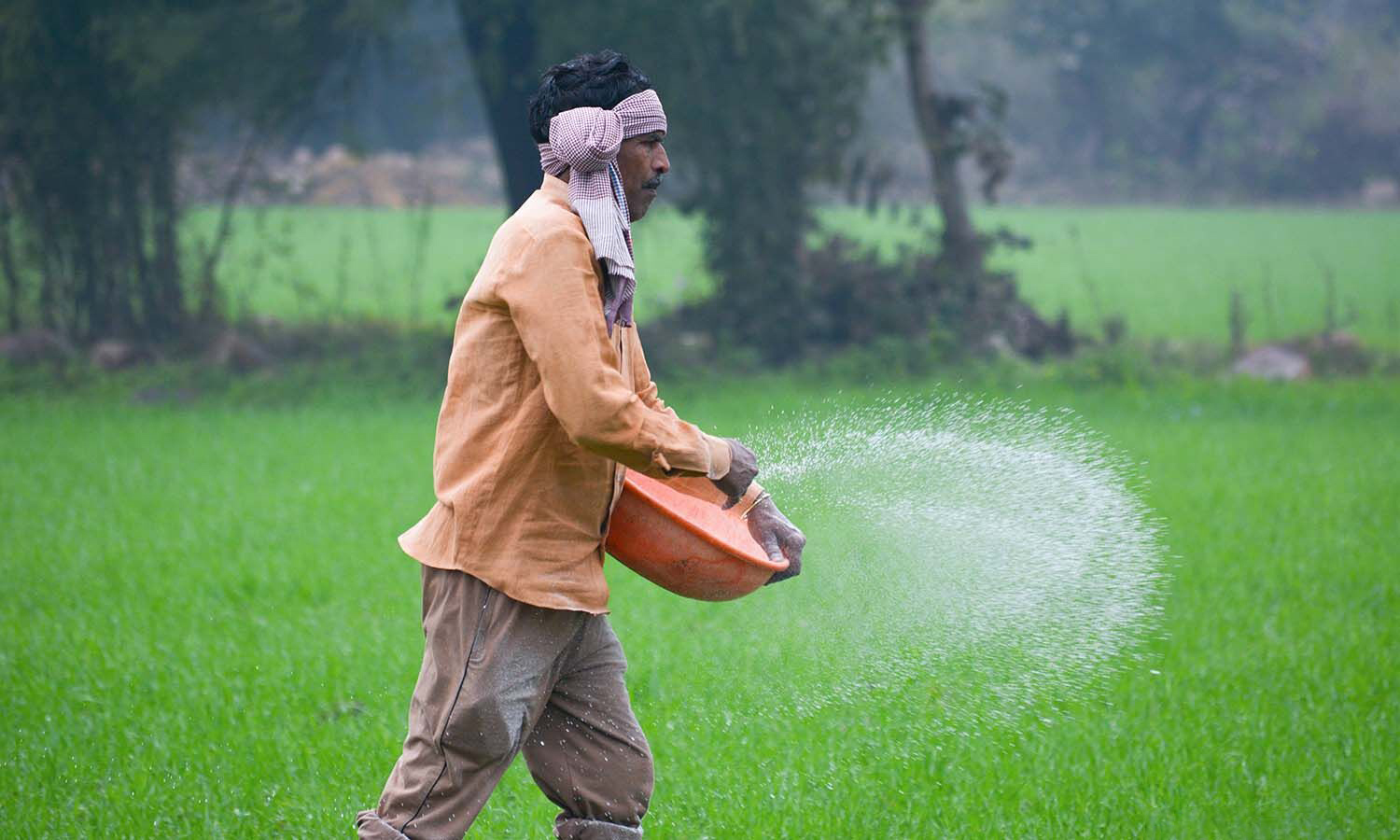Natural Farming, the Opportunity is here, and The Government is pushing it, You Can’t-Miss It!
Yes, it is the revival of the traditional methodology of farming, what many call Natural Farming. It is essential for the economy, ecology, and the larger good of society. Let us understand the nitty-gritty of the same.
The agricultural development policy in developing countries should aim to increase food production. With lower costs, producing better quality products, and causing little or no harm to people or the environment.
The government has been trying to promote natural farming since independence. But it’s hard to believe that only 2.7% of the country’s net-sown area, which amounts to 3.8 million hectares (ha), is currently being used for this purpose.
What Is Natural Farming?
It can be defined as “farming without chemicals and relying on livestock”. Based on agroecology, it is a diverse farming system combining crops, trees, and animals to best use functional biodiversity.
It has the potential to increase farmers’ incomes and provide many other benefits, like restoring soil fertility and environmental health and preventing or lowering greenhouse gas emissions.
In 1975, Masanobu Fukuoka, a farmer, and philosopher from Japan wrote about this way of farming in his book The One-Straw Revolution 1975.
It uses natural or ecological things that happen on farms or near them. Internationally, natural farming is considered a form of regenerative agriculture, which is a popular approach to help save the planet.
What About the Indian Scenario?
In India, the practice of natural farming is promoted through the Bhartiya Prakritik Krishi Paddhati Programme (BPKP) as a part of the Paramparagat Krishi Vikas Yojana (PKVY).
The goal of BPKP is to encourage indigenous people to use traditional methods that reduce the need to buy inputs from outside the country.
As the name suggests, natural farming is the art, practice, and, more and more, the science of working with nature to get a lot more done with less.
In the last ten years, people have become more interested in Natural farming. they offer some solutions to the problems plaguing the agricultural sector.
Natural farming can help protect the environment, conserve irreplaceable resources, and enhance the taste of food.
What Yardstick Does The Government Put For Self?
The government’s 2021 Economic Survey says that the goal of natural farming is to get rid of chemical fertilizers and pesticides, which pollute the environment, and to encourage “good agronomic practices,” which means using science and technology to take care of crops.
In her 2022 budget speech, Finance Minister Nirmala Sitharaman announced that natural farming without “chemicals will be promoted nationwide, with a particular focus on the lands of farmers located in 5-km-wide corridors along the Ganges river.”
India stopped worrying about not having enough food by using high-yielding seed varieties, fertilizers to feed the soil, and pesticides to keep crops from getting damaged. But this led to damage to the environment from too much use of fertilizers, which hurt both human and environmental health.
There is an urgent requirement to increase the adoption of alternative farming methods. As it impact of the Green Revolution.

What Are The Various kinds of Natural Farming?
Pure Organic farming.
It uses organic manures and biopesticides instead of chemicals and pesticides made from non-living things.
Integrated Systems for Organic Farming
Farmers don’t want to use technology at all or very little. Integrated organic farming systems are different because they use all the technology they can get to make their lives easier and produce more food.
But they still don’t have a lot of chemicals, pesticides, or other similar things. Still, inside the rules for organic.
Combining Natural/Organic Farming
Integrated natural farming combines methods like integrated pest management and nutrient management. Both are good for the environment and good for business.
What Are The Challenges Of Natural Farming?
-
Not enough biomass
Many experts and farmers aren’t sure if natural materials can provide the right amount of nutrients. Although this problem can be solved, they think the organic matter present is not enough.
-
Supply and demand don’t match up
Grains that don’t spoil can be grown and shipped anywhere without fruits and vegetables. Companies, aggregators, and farmers should be willing to make it close to where the demand comes from.
But most of the demand comes from cities where there are no natural farms for growing fruits and vegetables. Smart transport and dedicated channels of supply are the solutions to this disparity.
-
Time
Natural farming requires more interaction between the farmer and his crop. Things like keeping an eye, stepping in when needed, and getting rid of weeds. The cost of natural farming is higher than chemical farming. So a single farmer can grow more crops using industrial methods.
-
High price
Natural farming requires a significant amount of care. It is evident that the product would be priced higher. Most of the space is used to sell these organic fruits and vegetables once they have been taken to market. Because of this, most people do this to show that they like organic products.
Items sold at the market cost half as much as items that aren’t organic. So, we can say that organic items are expensive, and not everyone is willing to pay the price.
-
Not having the right infrastructure
Most large natural farms still use industrialized farming methods. Such as using trucks to move food from the field to the table. Unfortunately, this means using the same harmful methods as factory farms. These facts are hiding from the farms and called “Natural”.
Is Natural Farming Good? Does It Offer Multitudes Of Benefits?
-
It tastes better and has more nutrients
Fruits and vegetables that are grown naturally taste much better than those that are grown differently. This is because they have a lot more time to grow up and aren’t given any extra things to make them grow faster. The sugar structures in these plants have more time to grow and become a tasty and healthy food.
-
It lowers the concentration of pesticides and chemicals in the soil
Pesticides and other chemicals are used less in natural farming, which is good for the environment. It keeps the soil, water, air, plants, and animals healthy. Also, it helps solve some of the most important environmental problems, such as soil erosion, air pollution, water pollution, etc.
-
Supporting the variety of life
Rotating crops to make the soil more fertile and naturally raised animals are two ways to help promote biodiversity, which is good for the health of all living things. As organic farms give wildlife safe places to live, the ecosystems around them also get better.
-
It consumes less energy
Organic farming doesn’t use chemical fertilizers like traditional farming, which uses many of these outside chemicals. Keeping away from fertilizers helps save energy in a bigger way. This is because making synthetic fertilizers takes a lot of energy. In natural farming systems, it’s safe to say that at least 30–50% less energy is used.
In one of their reports, the European Journal of Molecular and Clinical Medicine, the British Department for Environment, Food, and Rural Affairs said that organic crops and organic dairying use 35% and 74% less energy, respectively than conventionally grown crops and dairying.
-
Sustainable in the long term
Organic farming is a way to grow food that will last for a long time. Organic farming tries to stop problems before they happen instead of trying to fix them after they happen, which can be too late.
-
Less erosion and better control of water
To stop soil erosion, people can improve the soil quality and ensure that the ground is covered as much as possible with mulch or cover crops. Agriculture uses less water when the structure of the soil is better, there is more organic matter in it, and when crops grow more densely.
-
Traditional touch
Organic farming is like going back to how things were done before machines took over. So, organic farming techniques that use traditional knowledge are easy for farmers to understand and use. The way a farmer farms is based on how well he or she can use natural resources.
-
Employment generation
It creates jobs through natural farming input businesses, adding value, selling in the local area, etc. The extra money from natural farming is put back into the village.
As it has the potential to create jobs, it could deter young people from leaving rural areas.
-
Sustainability of Livestock
Integrating animals into the farming system is a key part of natural farming and helps to restore the ecosystem. Like Jivamrit and Beejamrit, bio-inputs that are good for the environment are made from cow dung and urine, among other things.
-
Resilience building
By adding organic carbon, no/low tillage, and a variety of plants, the soil structure is changing, which helps plants grow even in harsh conditions like droughts and cyclones.
Many farmers benefit from NF because it makes crops more resistant to extreme weather.
What’s The Final Verdict?
Natural agriculture is the only way to take care of the land and get the soil to grow back by going back to the way we used to farm, which was without chemicals, pesticides, and fertilizers. This could be a step toward sustainable development if people chose not to use chemicals, synthetic materials, pesticides, and growth hormones to make enough high-quality, nutritious food.
Natural farming is one type of farming that is becoming more and more popular. It depends a lot more on composts made from natural materials, like fertilizer waste, green waste, bone meal, and so on, than it does on not using pesticides or fertilizers.

